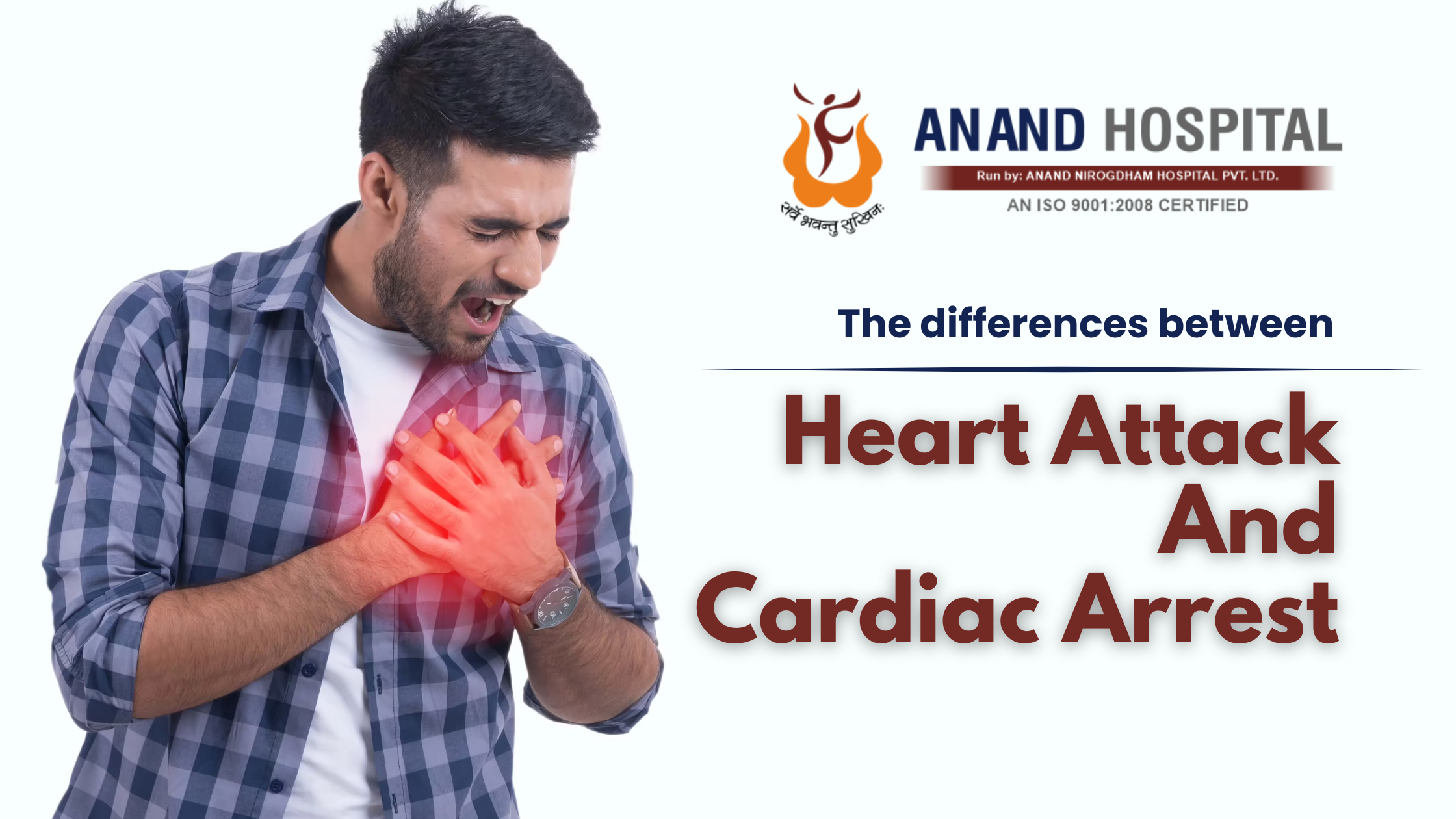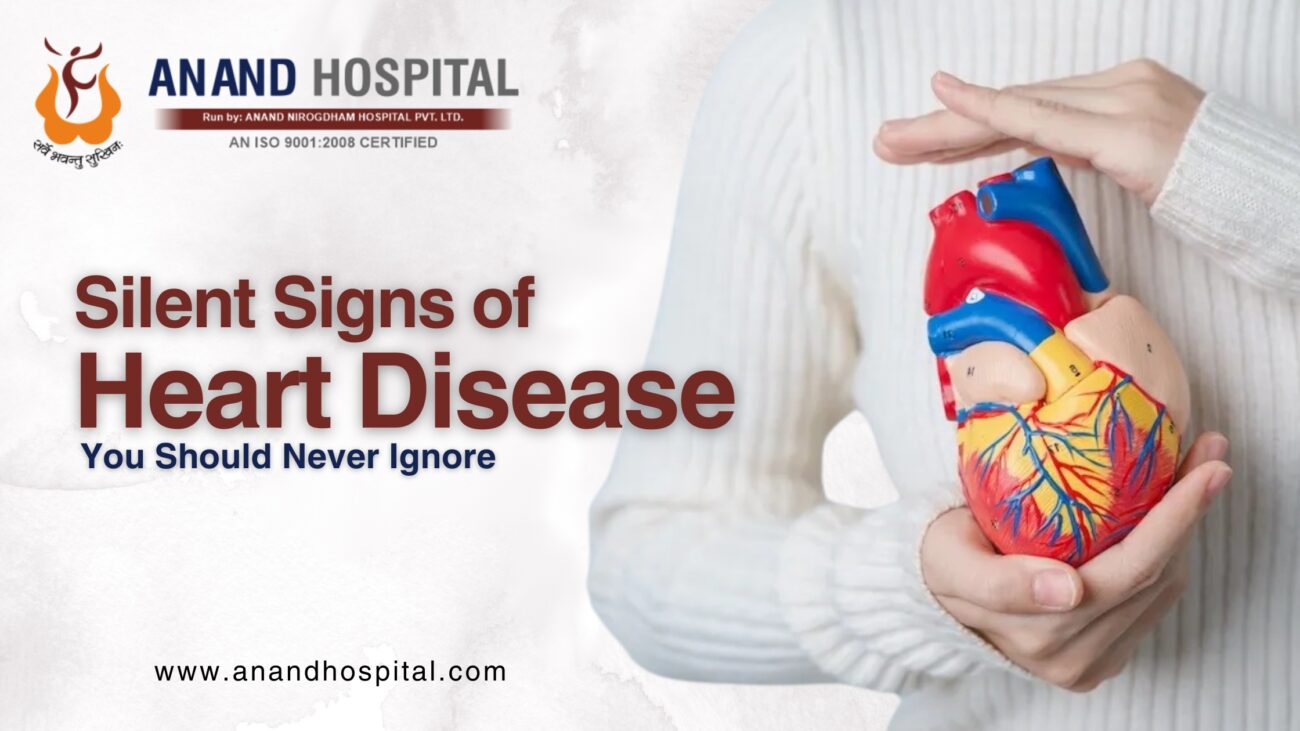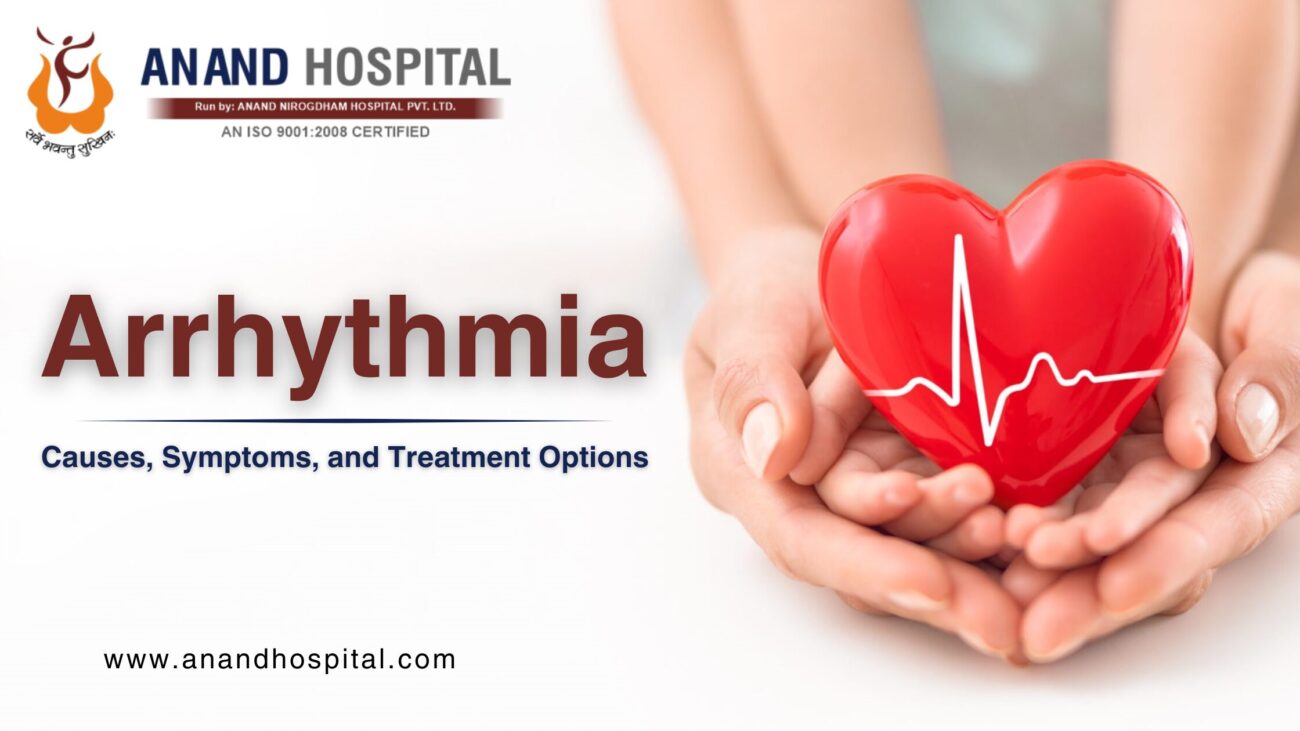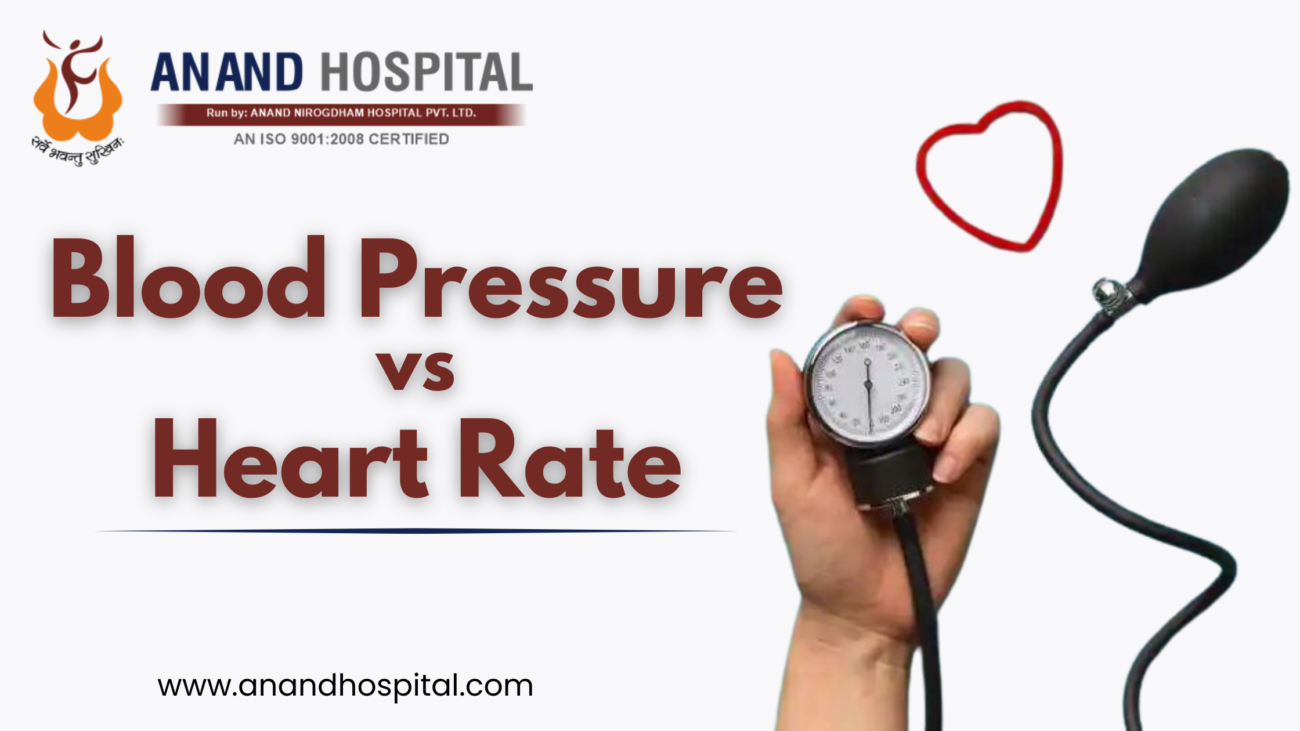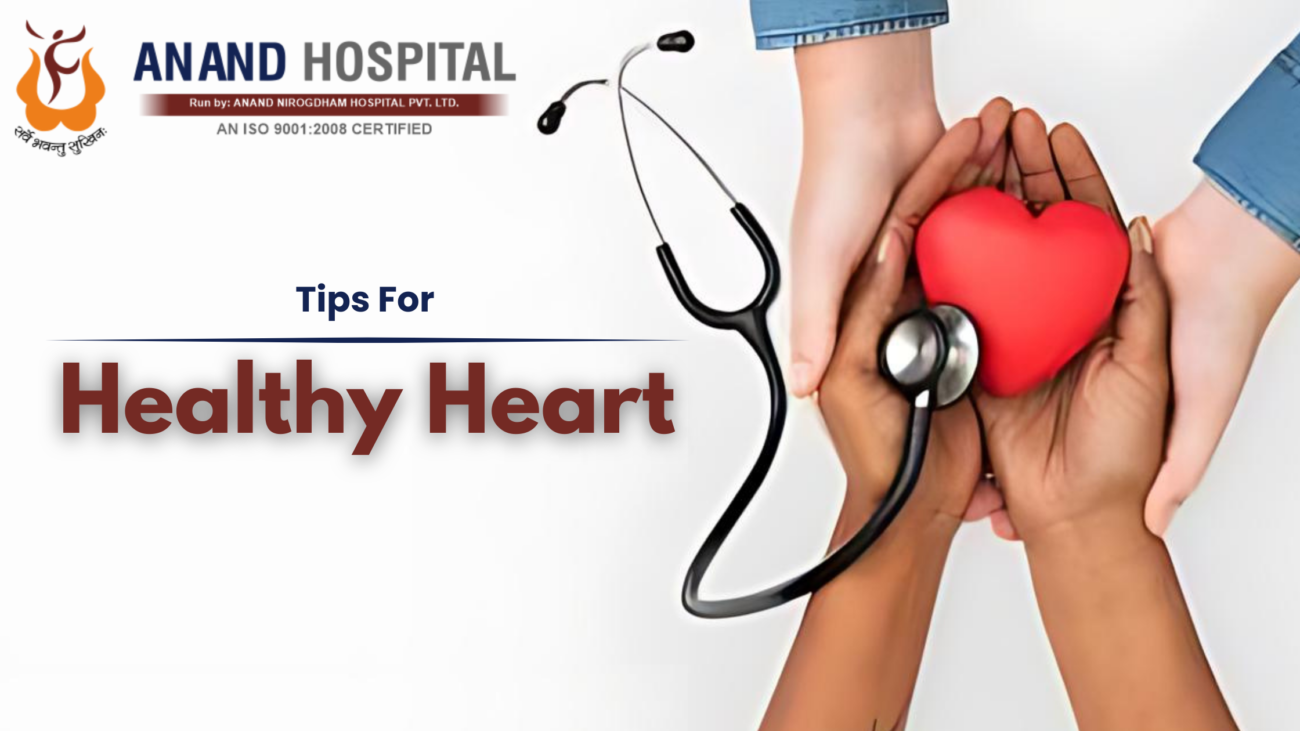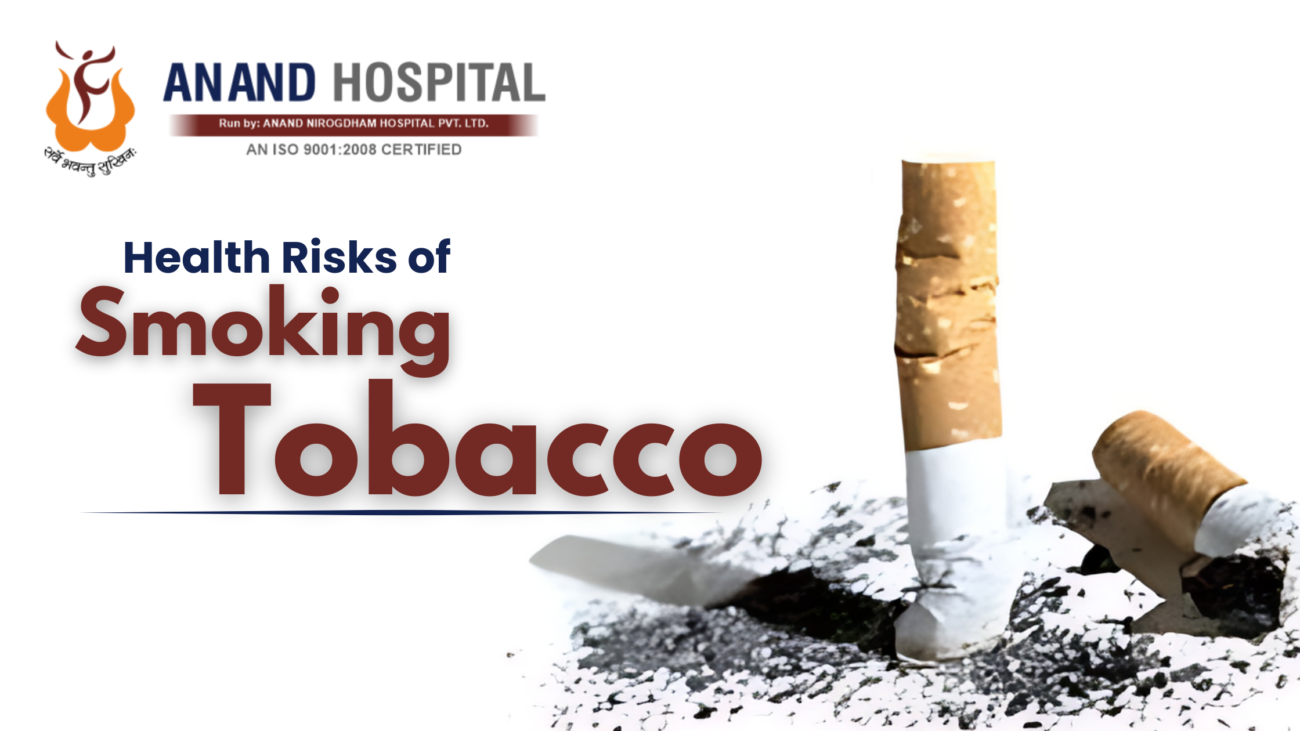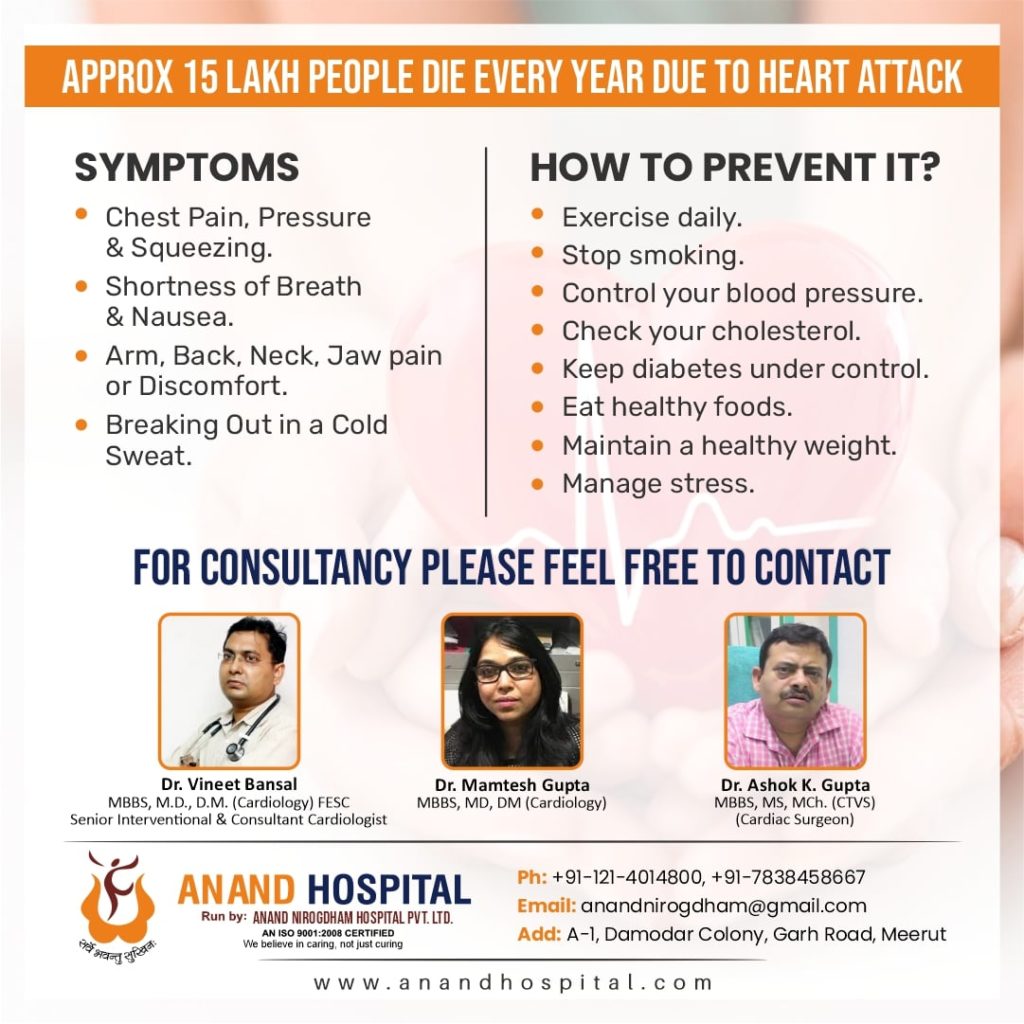When it comes to heart-related emergencies, two terms often come up: heart attack and cardiac arrest. Although they are sometimes used interchangeably, heart attack and cardiac arrest are not the same. Understanding the difference between these two medical emergencies can be crucial for effective treatment and potentially life-saving interventions. At Anand Hospital in Meerut, we strive to educate our patients on such critical health matters to ensure everyone is well-prepared in case of an emergency.
What is a Heart Attack?
A heart attack, or myocardial infarction, occurs when blood flow to a part of the heart is blocked. The heart muscle requires a constant supply of oxygen-rich blood to function. This blood is supplied by the coronary arteries. If these arteries become blocked due to a buildup of cholesterol, fatty deposits (plaque), or a blood clot, the part of the heart muscle supplied by that artery begins to die due to a lack of oxygen.
Symptoms of a Heart Attack
Recognizing the symptoms of a heart attack is vital. Common signs include:
- Chest pain or discomfort: Often described as a squeezing, pressure, fullness, or pain in the center or left side of the chest.
- Shortness of breath: Can occur with or without chest discomfort.
- Other symptoms: Cold sweat, nausea, light-headedness, or pain in one or both arms, back, neck, jaw, or stomach.
Treatment for a Heart Attack
Immediate treatment is essential to restore blood flow to the heart muscle and minimize damage. Treatments can include:
- Medications: Such as clot-busting drugs, blood thinners, and pain relief.
- Medical procedures: Angioplasty and stenting or coronary artery bypass grafting (CABG).
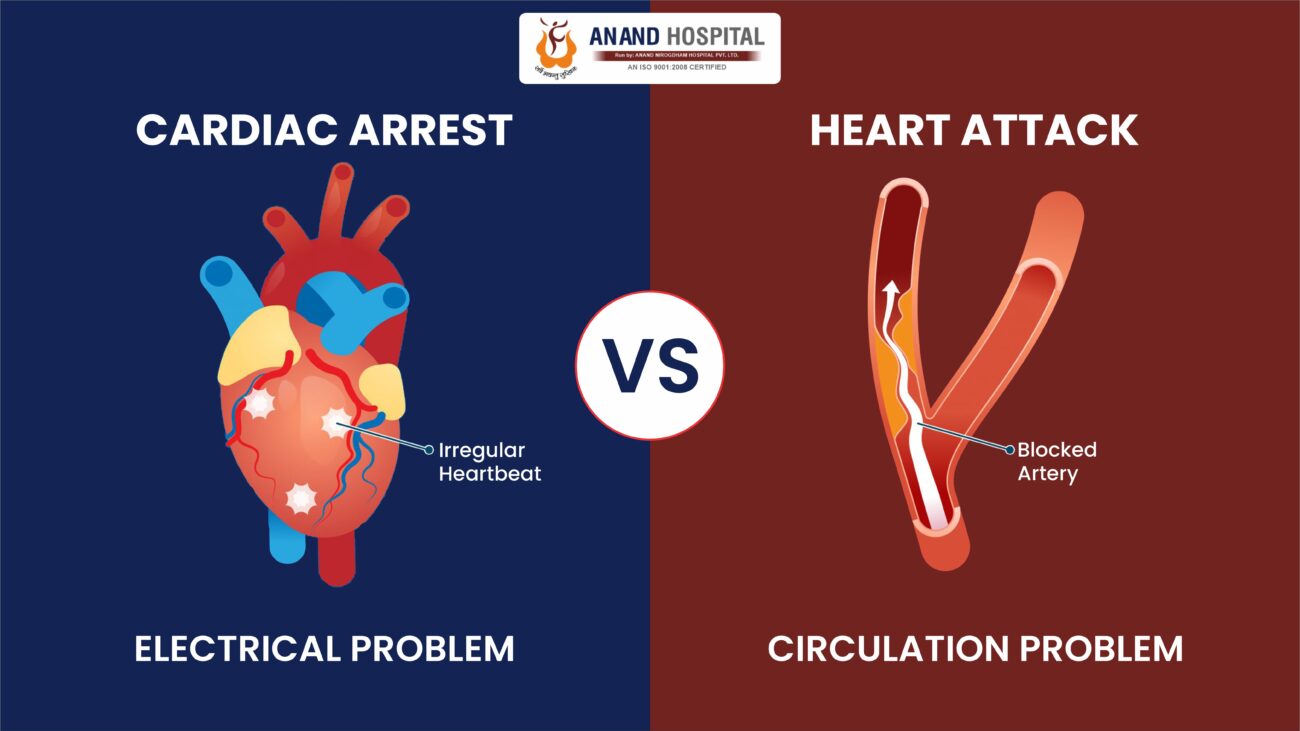
What is Cardiac Arrest?
Cardiac arrest is an electrical problem. It happens when the heart’s electrical system malfunctions, causing the heart to stop beating effectively. This can lead to sudden cessation of blood flow to the brain and other vital organs. Cardiac arrest can occur suddenly and without warning.
Symptoms of Cardiac Arrest
Unlike a heart attack, the symptoms of cardiac arrest are immediate and severe:
- Sudden collapse
- No pulse
- No breathing
- Loss of consciousness
Treatment for Cardiac Arrest
Cardiac arrest is a medical emergency that requires immediate intervention. The primary treatment includes:
- Cardiopulmonary resuscitation (CPR): To maintain blood flow to the brain and other vital organs.
- Defibrillation: Using an automated external defibrillator (AED) to deliver a shock to the heart to restore a normal rhythm.
Key Differences Between Heart Attack and Cardiac Arrest
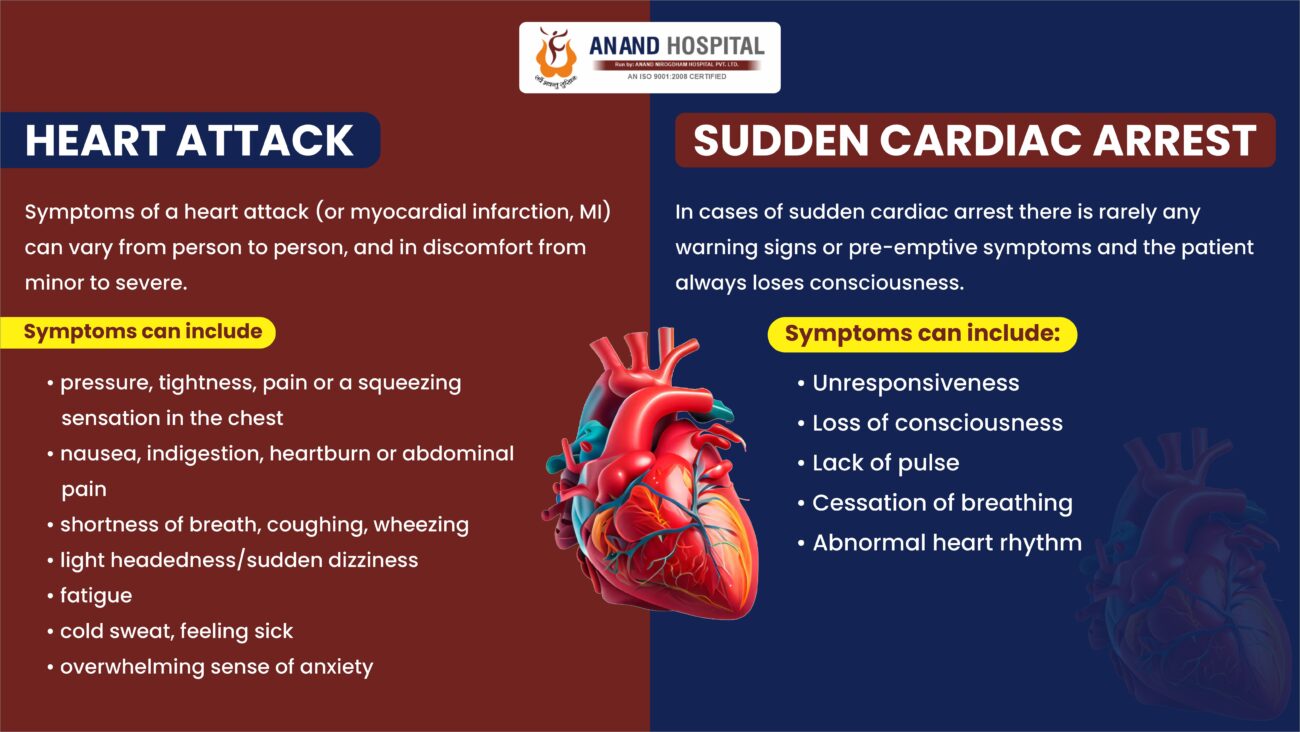
While both heart attack and cardiac arrest involve the heart, their causes, symptoms, and treatments differ significantly:
- Cause: A heart attack is caused by a blockage in the coronary arteries, whereas cardiac arrest is caused by a malfunction in the heart’s electrical system.
- Symptoms: Heart attack symptoms develop over time and include chest pain and shortness of breath. Cardiac arrest symptoms are sudden and severe, including collapse and lack of pulse.
- Treatment: Heart attacks are treated with medications and procedures to restore blood flow. Cardiac arrest requires immediate CPR and defibrillation.
Prevention and Risk Factors of Heart Attack And Cardiac Arrest
Both share some common risk factors such as high blood pressure, high cholesterol, smoking, obesity, and family history of heart disease. Preventive measures include:
- Leading a healthy lifestyle: Regular exercise, a balanced diet, and avoiding tobacco.
- Regular health check-ups: Monitoring blood pressure, cholesterol levels, and other cardiovascular health indicators.
- Managing stress: Through relaxation techniques and healthy coping mechanisms.
Conclusion
Understanding the difference between heart attack and cardiac arrest can help in responding effectively during emergencies. Both conditions are serious and require immediate medical attention, but their causes, symptoms, and treatments vary.
For more information on heart health and emergency care, visit Anand Hospital in Meerut. Our dedicated team of healthcare professionals is committed to providing comprehensive care and education to help you maintain a healthy heart.
By spreading awareness and knowledge, we aim to reduce the risks and improve the outcomes of heart-related emergencies in our community. Remember, timely intervention can save lives. Stay informed, stay prepared, and take care of your heart.
FAQ
Most frequent questions and answers
Yes, a heart attack can sometimes lead to cardiac arrest. During a heart attack, the heart muscle can become damaged and cause electrical disturbances that lead to cardiac arrest. It is crucial to seek immediate medical attention during a heart attack to prevent complications such as cardiac arrest.
A heart attack typically presents with symptoms like chest pain, shortness of breath, and discomfort in other areas of the upper body. These symptoms develop over time. Cardiac arrest, on the other hand, occurs suddenly and is characterized by a sudden collapse, no pulse, no breathing, and loss of consciousness. Immediate action, including calling emergency services and performing CPR if necessary, is vital in both cases.
If someone is experiencing cardiac arrest, call emergency services immediately. Begin cardiopulmonary resuscitation (CPR) to maintain blood flow to the brain and other vital organs. Use an automated external defibrillator (AED) if available, following the device’s instructions to deliver a shock to the heart to restore a normal rhythm. Continue CPR until professional medical help arrives.
Yes, several lifestyle changes can reduce the risk of both. These include:
- Eating a balanced diet rich in fruits, vegetables, and whole grains.
- Engaging in regular physical activity.
- Avoiding tobacco products and limiting alcohol consumption.
- Maintaining a healthy weight.
- Managing stress through relaxation techniques and healthy coping mechanisms.
- Regularly monitoring and managing blood pressure, cholesterol, and blood sugar levels.

